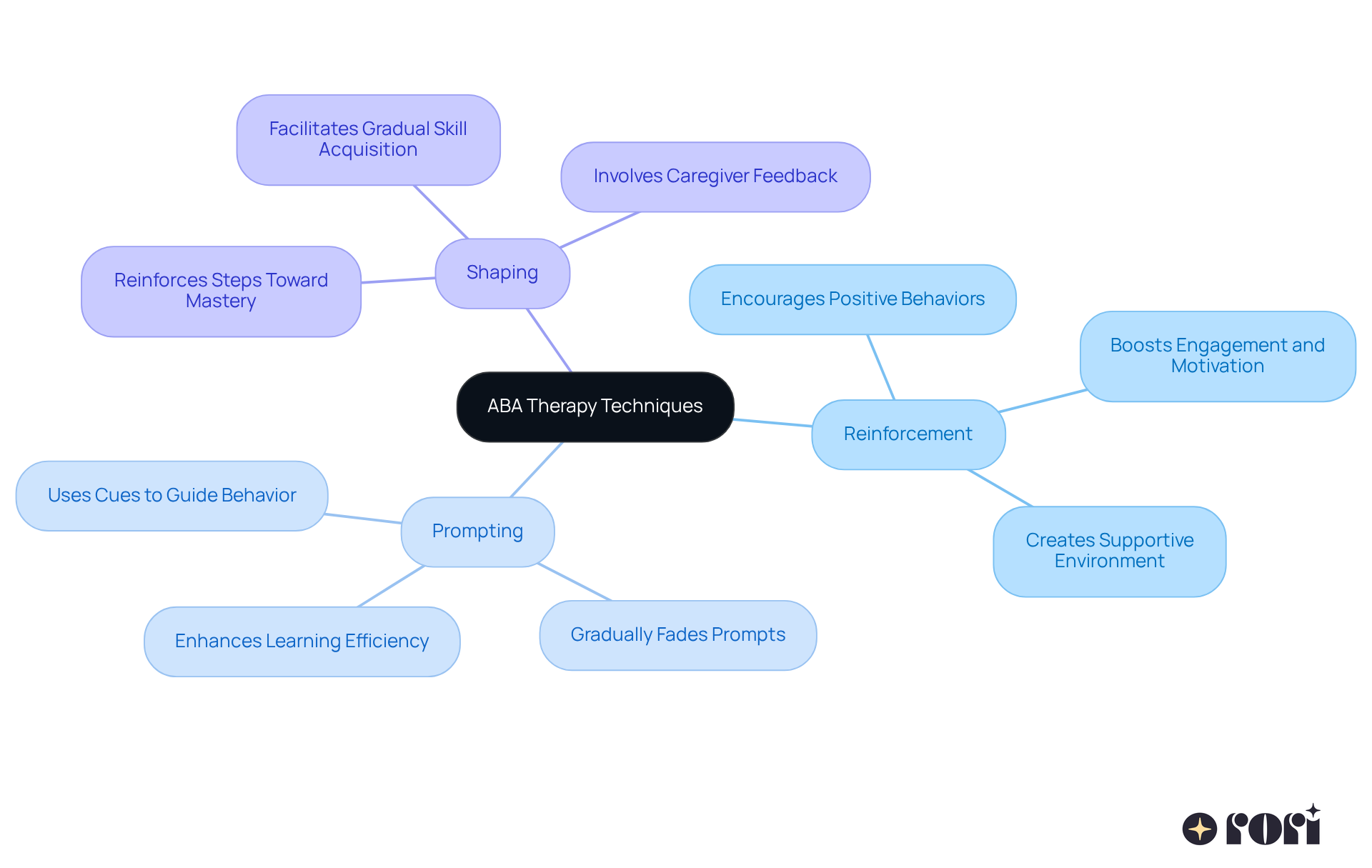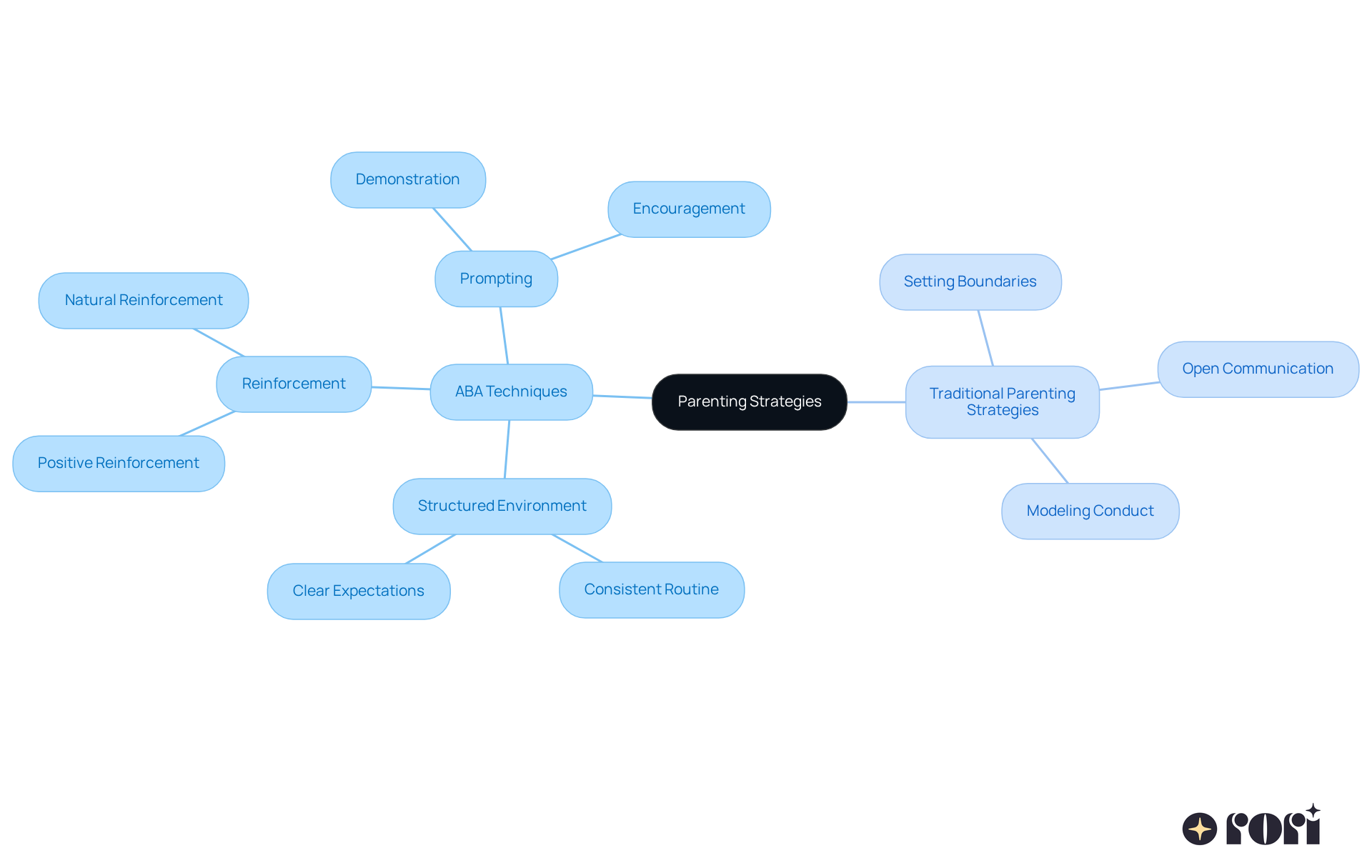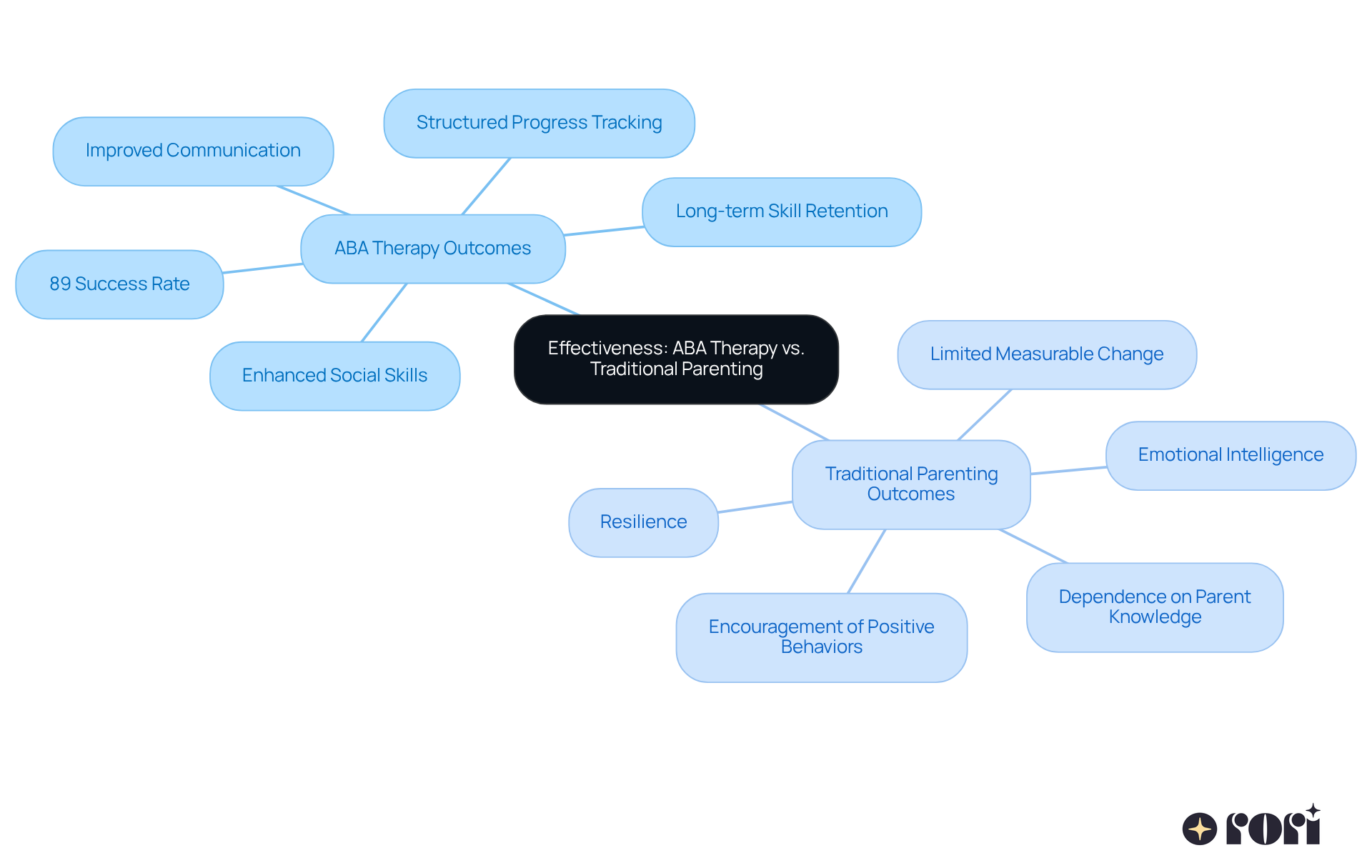This article dives into various ABA therapy techniques that can be incredibly helpful for parents. It highlights how structured methods like reinforcement, prompting, and shaping can really boost children's skills and behaviors right at home. These techniques not only provide measurable outcomes but also encourage active parental involvement. This is a refreshing contrast to traditional parenting approaches, which might not offer the same level of targeted intervention and consistency.
Let’s explore this together! By embracing these techniques, parents can create a more supportive and effective environment for their children. It’s all about finding what works best for your family and making those small, impactful changes. We’re here to help you every step of the way!
Understanding the nuances of parenting can feel overwhelming, especially when it comes to supporting children with autism. 😊 Applied Behavior Analysis (ABA) therapy provides a structured, evidence-based approach that empowers parents to nurture positive behaviors and skill development right at home. As families navigate the complexities of various parenting strategies, a question often arises: can the rigorous techniques of ABA truly outperform traditional parenting methods in fostering measurable growth and independence in children?
This article dives into the core ABA techniques and compares them with conventional approaches. We aim to provide insights that can help you make informed decisions for your child's developmental journey. Let’s explore this together!
Applied Behavior Analysis (ABA) therapy takes a friendly, structured approach to help improve specific actions and skills through systematic interventions. Let’s dive into some core techniques that can make a real difference:
Reinforcement: Think of this as a way to encourage positive behaviors by offering rewards—whether it’s a fun toy or a simple, heartfelt compliment. Recent studies show that positive reinforcement can really boost engagement and motivation in young individuals, leading to better skill acquisition. Did you know that ABA therapy has an impressive success rate of 89% for treating autism? That’s a testament to how effective these techniques can be! When caregivers understand reinforcement strategies, they can create a consistent and supportive environment that maximizes the intervention's impact.
Prompting: This method is all about using cues or hints to guide a child toward the right behavior. As they become more skilled, these prompts are gradually faded, helping them gain independence. Research highlights that effective prompting can enhance learning efficiency, allowing kids to pick up new skills faster. The earlier we start, the more effective the treatment tends to be, making timely prompting essential. It’s so important for caregivers to be actively involved in this process, tailoring strategies to fit their child’s unique needs.
Shaping: This technique focuses on reinforcing successive steps toward a desired action, helping kids gradually master complex skills. For instance, when teaching a child to tie their shoes, rewarding each small step—like holding the laces or making the first knot—can facilitate gradual mastery. Caregivers play a crucial role in this shaping process by consistently applying reinforcement and giving feedback based on progress.
Understanding ABA therapy techniques for parents is key for those who want to implement ABA principles at home. By using reinforcement, prompting, and shaping, you can create a nurturing environment that encourages positive behavior and skill development in your child with autism. Plus, gathering data to monitor progress and align strategies with your child’s needs is essential. ABA therapists often collaborate with families and other experts to ensure that intervention goals align with family values, which enhances the effectiveness of these approaches. This patient-centered, adaptable method is especially significant in early intensive behavioral intervention (EIBI), which has been shown to improve learning, verbal, and social skills in children with autism. And remember, ABA intervention is the only scientifically proven treatment for autism that is covered by insurance!
Let’s explore this together! We’re here to help you every step of the way!

When we look at ABA techniques compared to traditional parenting approaches, some key differences really stand out:
ABA therapy techniques for parents encourage active parental involvement in the therapy process, requiring them to learn and apply specific techniques to help their child's development. This structured involvement is quite different from traditional parenting, which might not demand such direct participation in behavioral strategies.
These differences can really shape how effectively parents support their children's growth at home. Many parents find that they can achieve more consistent and measurable progress in behavior and skills by utilizing structured ABA therapy techniques for parents.
Let’s explore this together! If you’re curious about how these approaches can work for you, we’re here to help you every step of the way!

Using ABA therapy techniques for parents at home can significantly enhance your child's learning journey! Here are some practical steps that can really make a difference:
Now, let’s look at some traditional parenting strategies that can complement ABA techniques:
By blending these approaches, you can create a supportive and effective learning atmosphere that enhances your child's developmental path and encourages independence. Plus, continuous data gathering in ABA treatment allows practitioners to track progress during sessions, ensuring that strategies remain effective and tailored to each child's needs. When caregivers utilize ABA therapy techniques for parents, it enhances their ability to support their children's behavioral goals, resulting in better outcomes and a more cohesive family dynamic. Importantly, studies show that 90% of children make substantial advancements when recommended hours of ABA support are fully implemented with engaged caregiver participation. This highlights the importance of caregiver training in this process.
Let’s explore this together! Your involvement can truly make a difference in your child's journey.

When we look at the effectiveness of ABA therapy compared to traditional parenting approaches, we see some interesting differences!
ABA Therapy Outcomes: Research shows that children who receive ABA therapy often make significant strides in communication, social skills, and adaptive behaviors. The structured nature of ABA therapy techniques for parents allows for clear tracking of progress, which is super helpful. In fact, studies have found that ABA treatment boasts an impressive success rate of over 89% in improving various skills, especially when started early and delivered with intensity.
Traditional Parenting Outcomes: On the other hand, traditional parenting can nurture emotional intelligence and resilience. However, it might not lead to the same level of measurable behavioral change that ABA can offer. The success of traditional methods often depends on how consistent and knowledgeable parents are about behavioral principles. While parents can definitely encourage positive behaviors, without organized interventions, the extent of change might be limited.
In conclusion, both approaches have their unique benefits! However, many parents find that ABA therapy techniques for parents tend to provide more quantifiable results in behavior modification. If you're looking for targeted interventions for your child with autism, ABA might just be the way to go. Let’s explore this together!

Implementing ABA therapy techniques at home can be a wonderful way for parents to support their child's development, especially for those with autism. By focusing on reinforcement, prompting, and shaping, caregivers can create a nurturing environment that encourages learning and positive behavior. This approach is different from traditional parenting, which often relies more on instinct and less formal strategies. It really highlights how important active parental involvement is in achieving real progress.
Key insights from the article show that ABA techniques not only clarify behavioral modification but also stress the importance of consistent application and data tracking. The structured nature of ABA allows for targeted interventions, leading to meaningful improvements in communication, social skills, and adaptive behaviors. This is especially beneficial when interventions begin early and involve engaged caregivers.
Ultimately, choosing between ABA therapy and traditional parenting strategies should depend on your child's specific needs and your family's goals. Embracing ABA techniques can empower you as parents to effectively foster your child's growth, creating a more cohesive family dynamic and better outcomes. By exploring these approaches together, you can truly make a meaningful difference in your child's journey, ensuring they receive the support they need for skill development and independence. Let’s explore this together!
What is ABA therapy?
Applied Behavior Analysis (ABA) therapy is a structured approach that helps improve specific actions and skills through systematic interventions, often used to support individuals with autism.
What is the role of reinforcement in ABA therapy?
Reinforcement involves encouraging positive behaviors by offering rewards, such as toys or compliments. It has been shown to boost engagement and motivation, leading to better skill acquisition.
What is the success rate of ABA therapy for treating autism?
ABA therapy has an impressive success rate of 89% for treating autism, demonstrating the effectiveness of its techniques.
How does prompting work in ABA therapy?
Prompting uses cues or hints to guide a child toward the right behavior. As the child becomes more skilled, these prompts are gradually faded to promote independence.
Why is timely prompting important?
Timely prompting is essential because the earlier it is implemented, the more effective the treatment tends to be, enhancing learning efficiency and skill acquisition.
What is the shaping technique in ABA therapy?
Shaping focuses on reinforcing successive steps toward a desired action, allowing children to gradually master complex skills by rewarding each small step in the process.
How can caregivers support the shaping process?
Caregivers can support shaping by consistently applying reinforcement and providing feedback based on the child's progress.
Why is understanding ABA techniques important for parents?
Understanding ABA techniques allows parents to implement ABA principles at home, creating a nurturing environment that encourages positive behavior and skill development in their child with autism.
What is the significance of data gathering in ABA therapy?
Gathering data to monitor progress is essential for aligning strategies with the child's needs, ensuring that interventions are effective and tailored.
How do ABA therapists collaborate with families?
ABA therapists often work with families and other experts to ensure that intervention goals align with family values, enhancing the effectiveness of the approaches used.
What is early intensive behavioral intervention (EIBI)?
EIBI is a method within ABA therapy that has been shown to improve learning, verbal, and social skills in children with autism, emphasizing the importance of early intervention.
Is ABA therapy covered by insurance?
Yes, ABA intervention is the only scientifically proven treatment for autism that is typically covered by insurance.